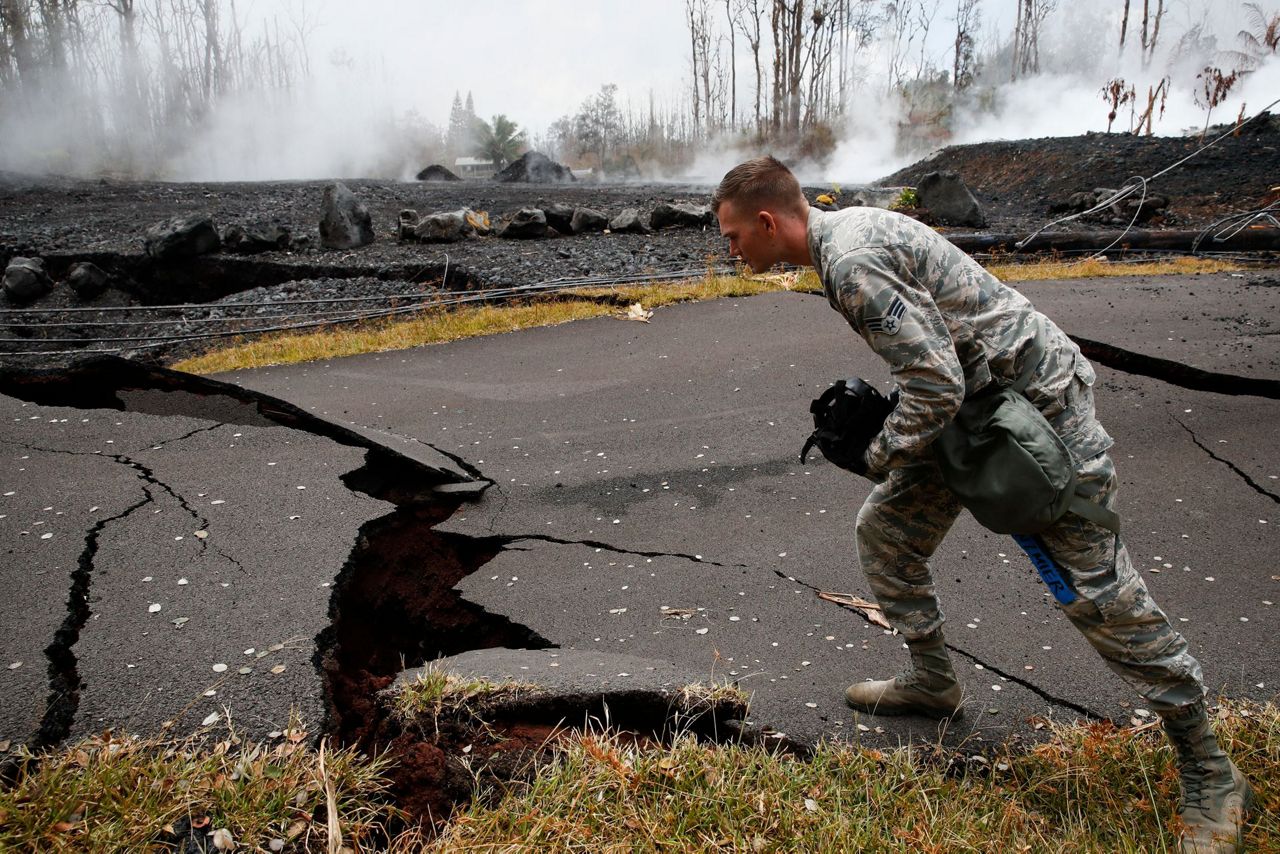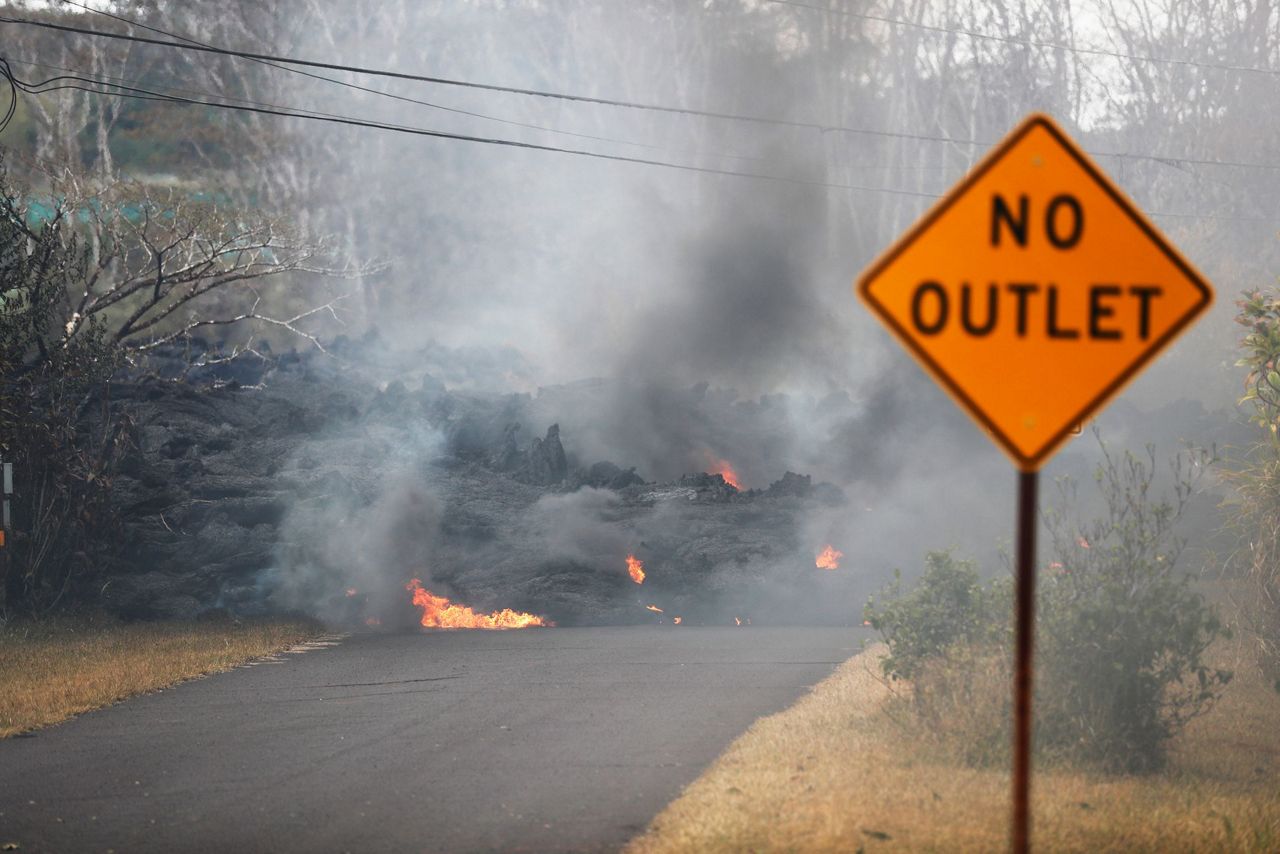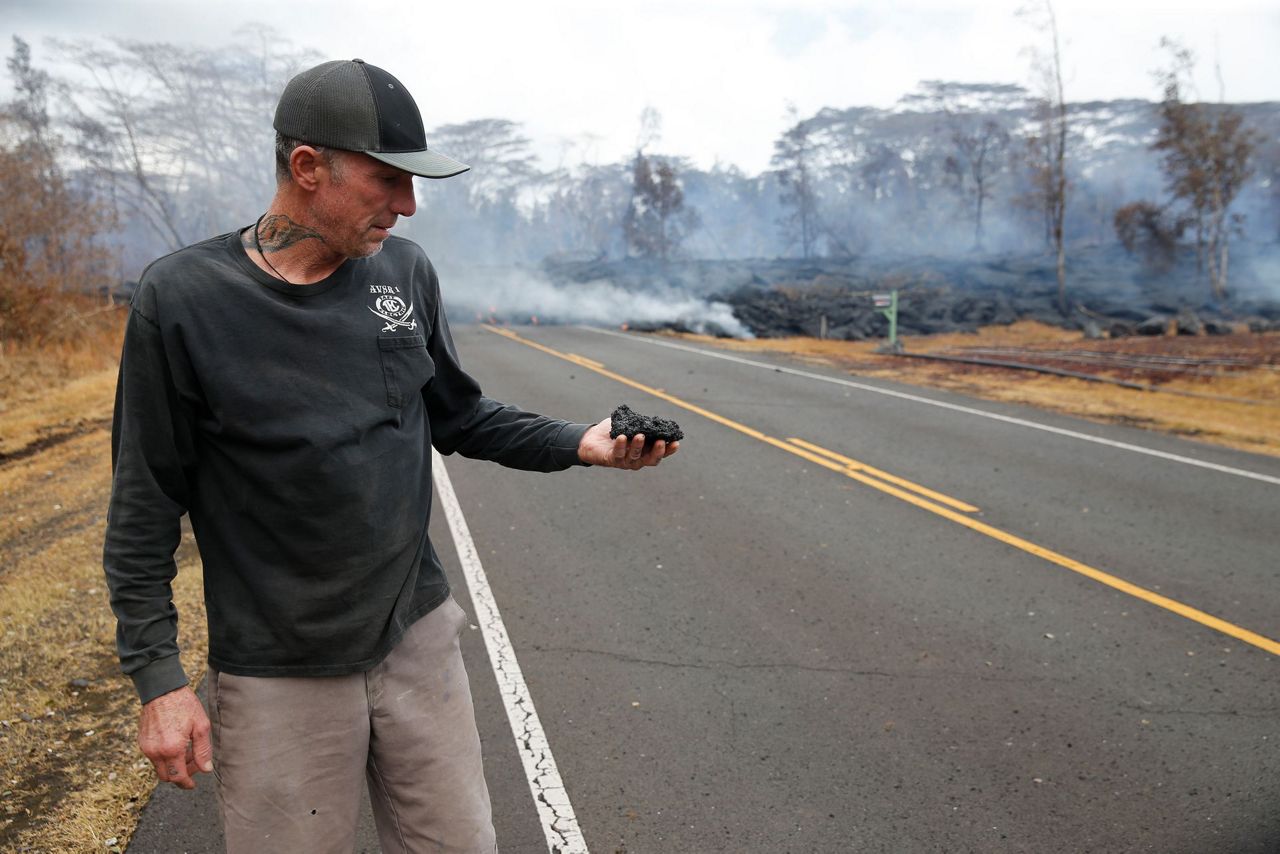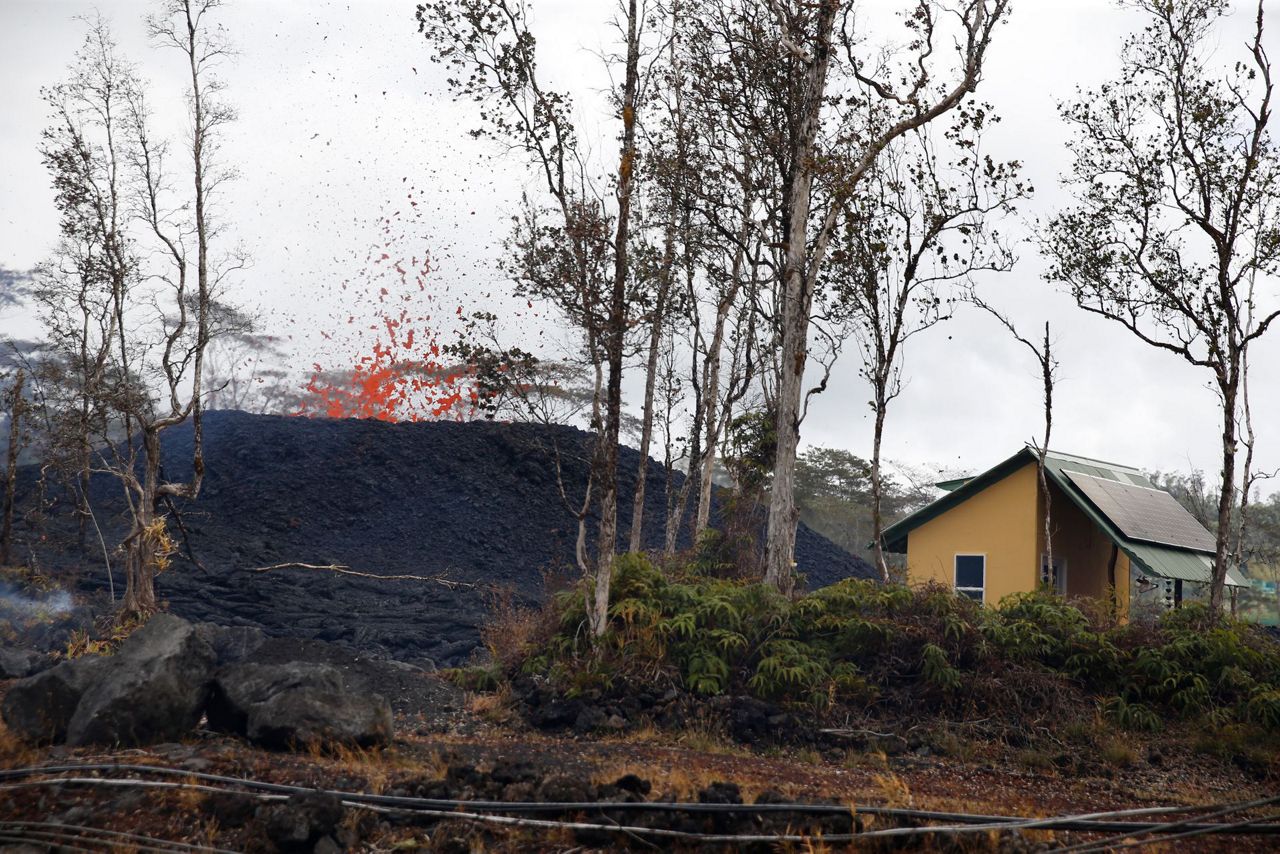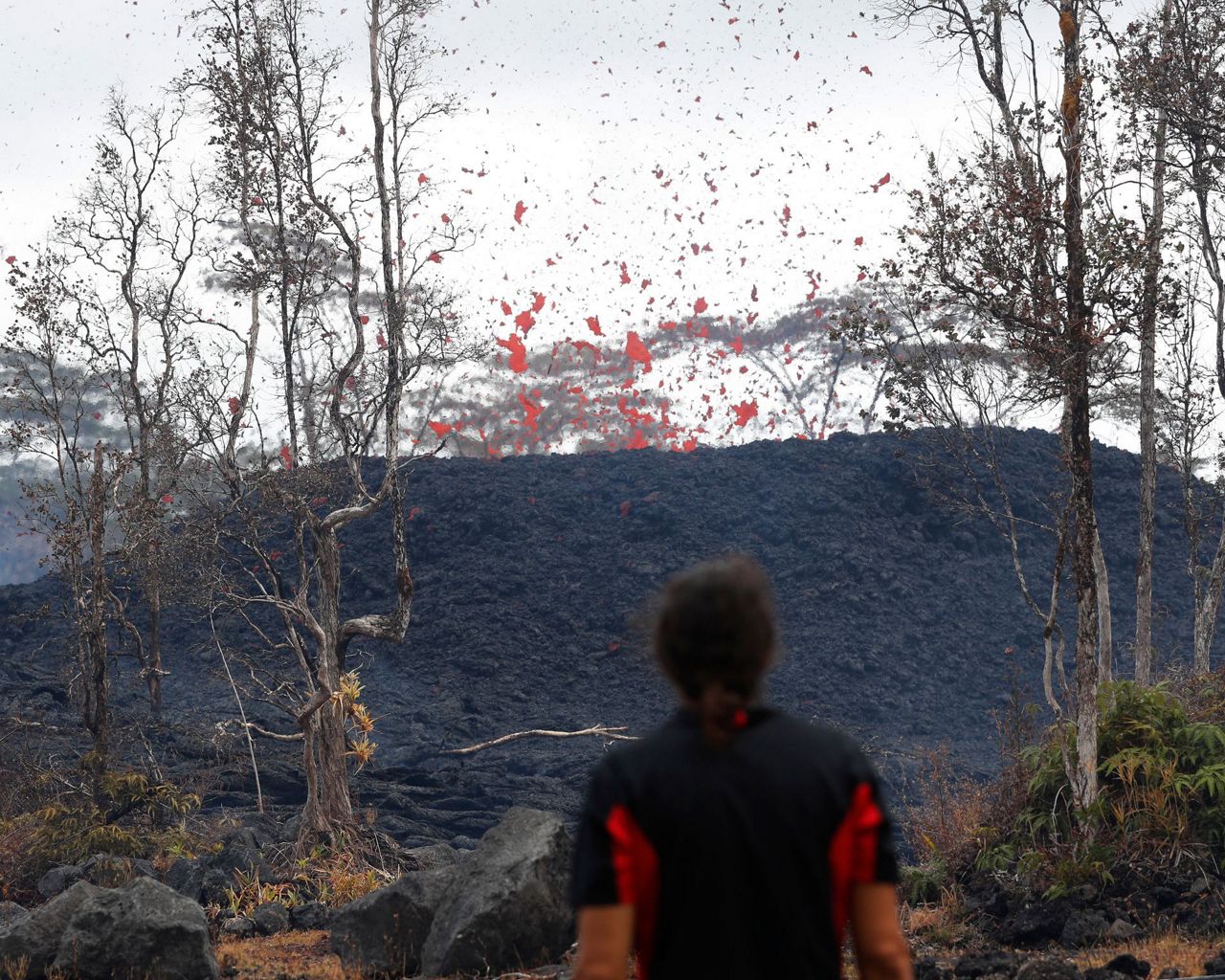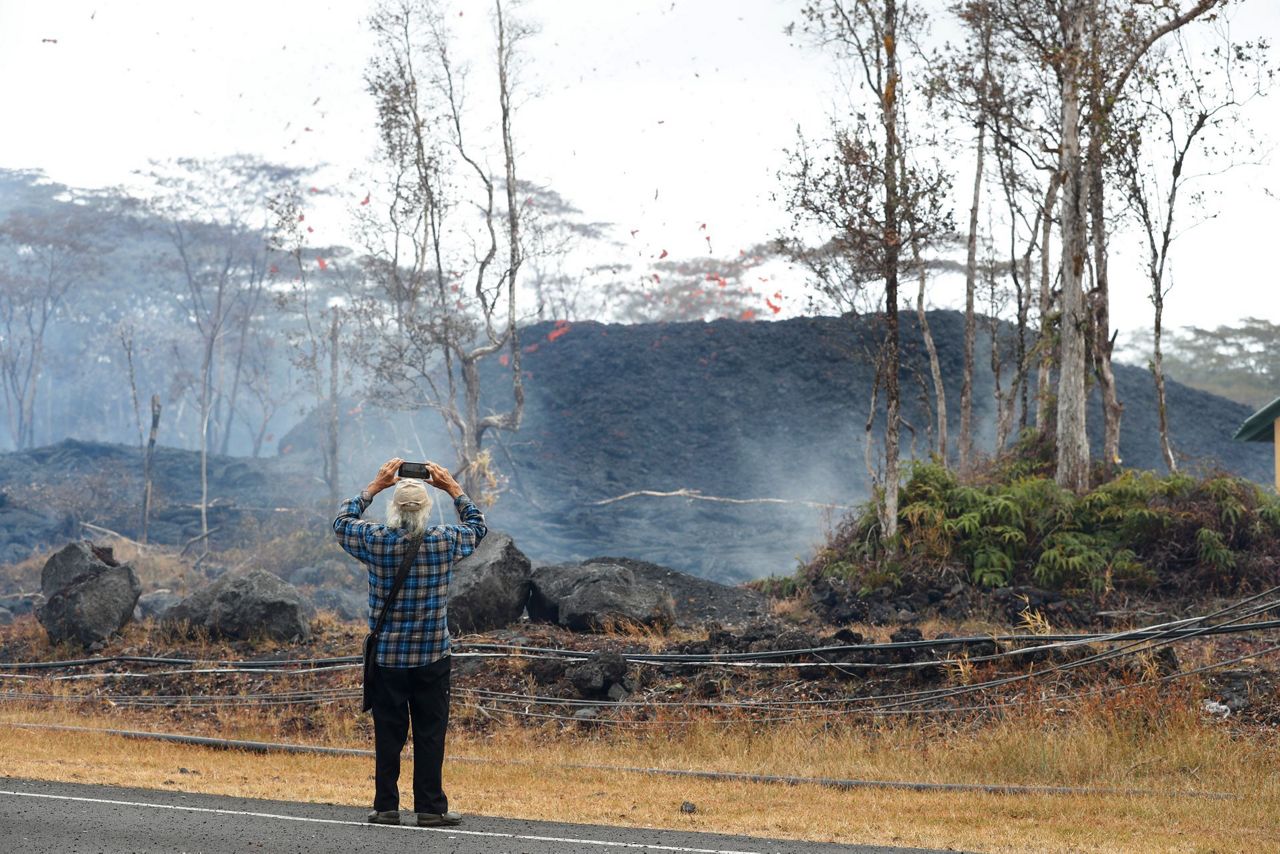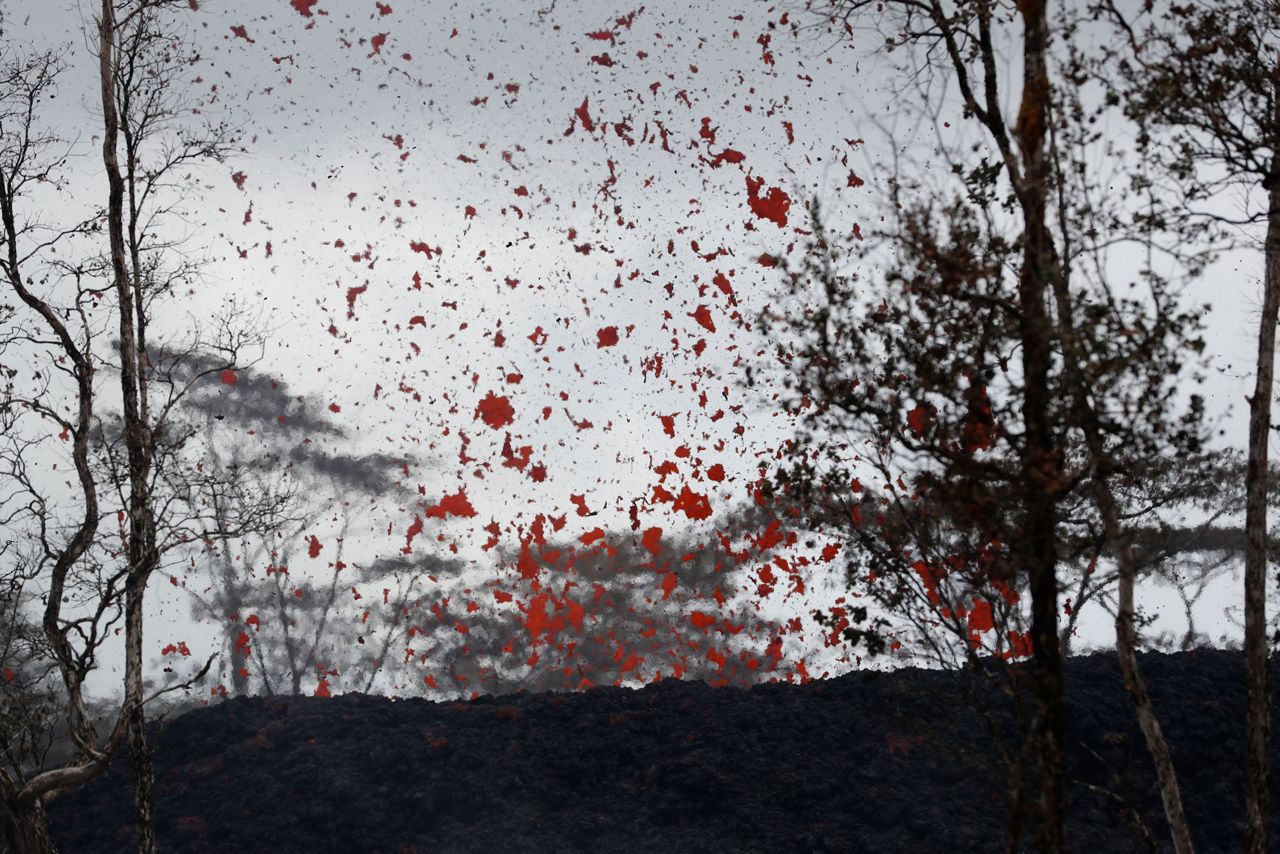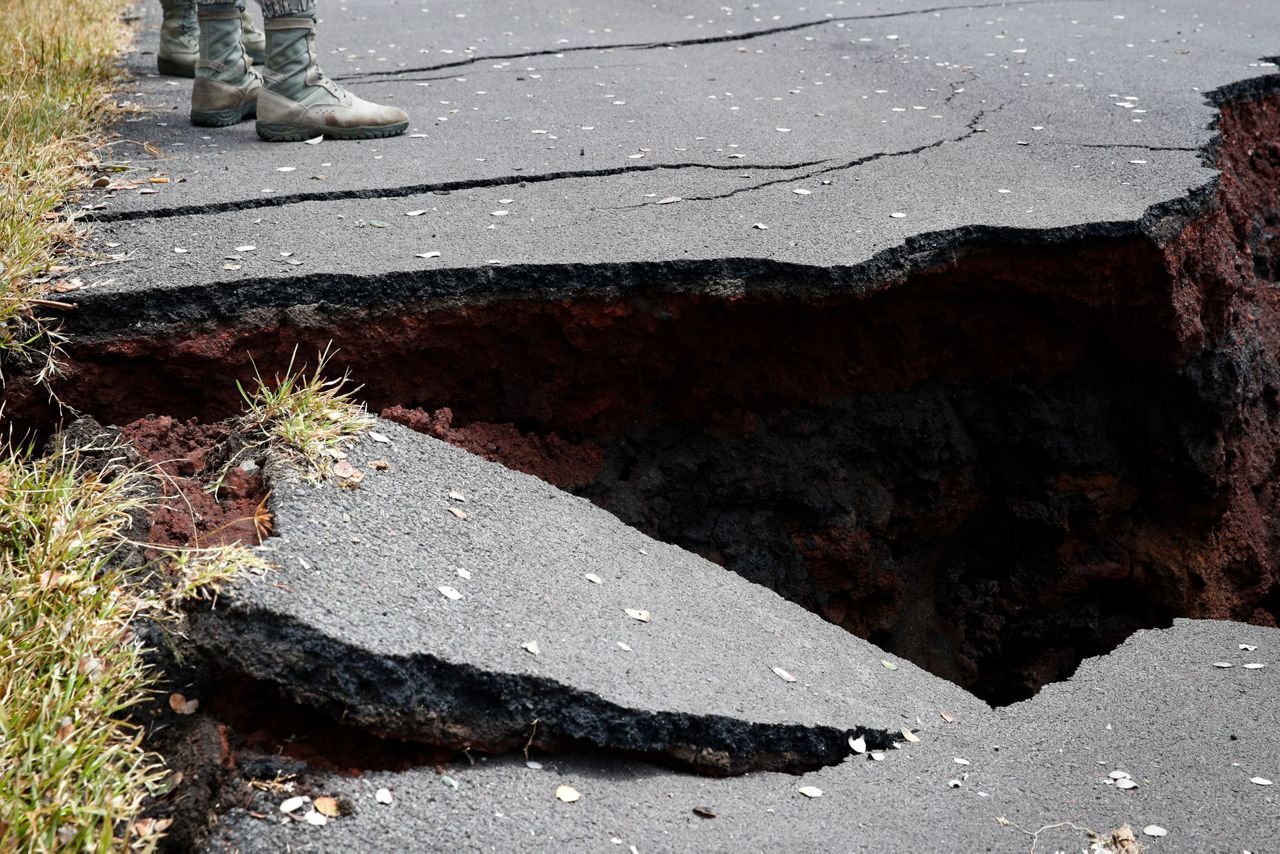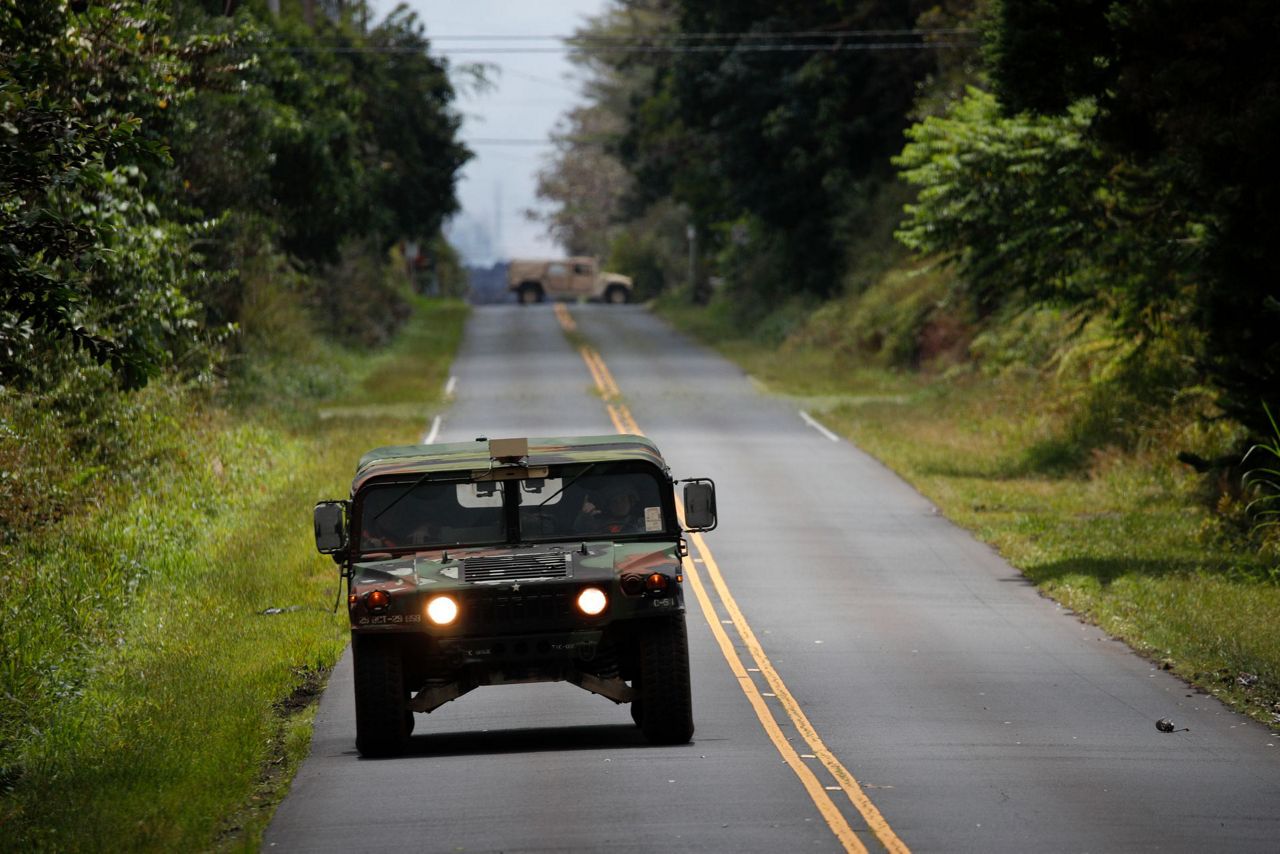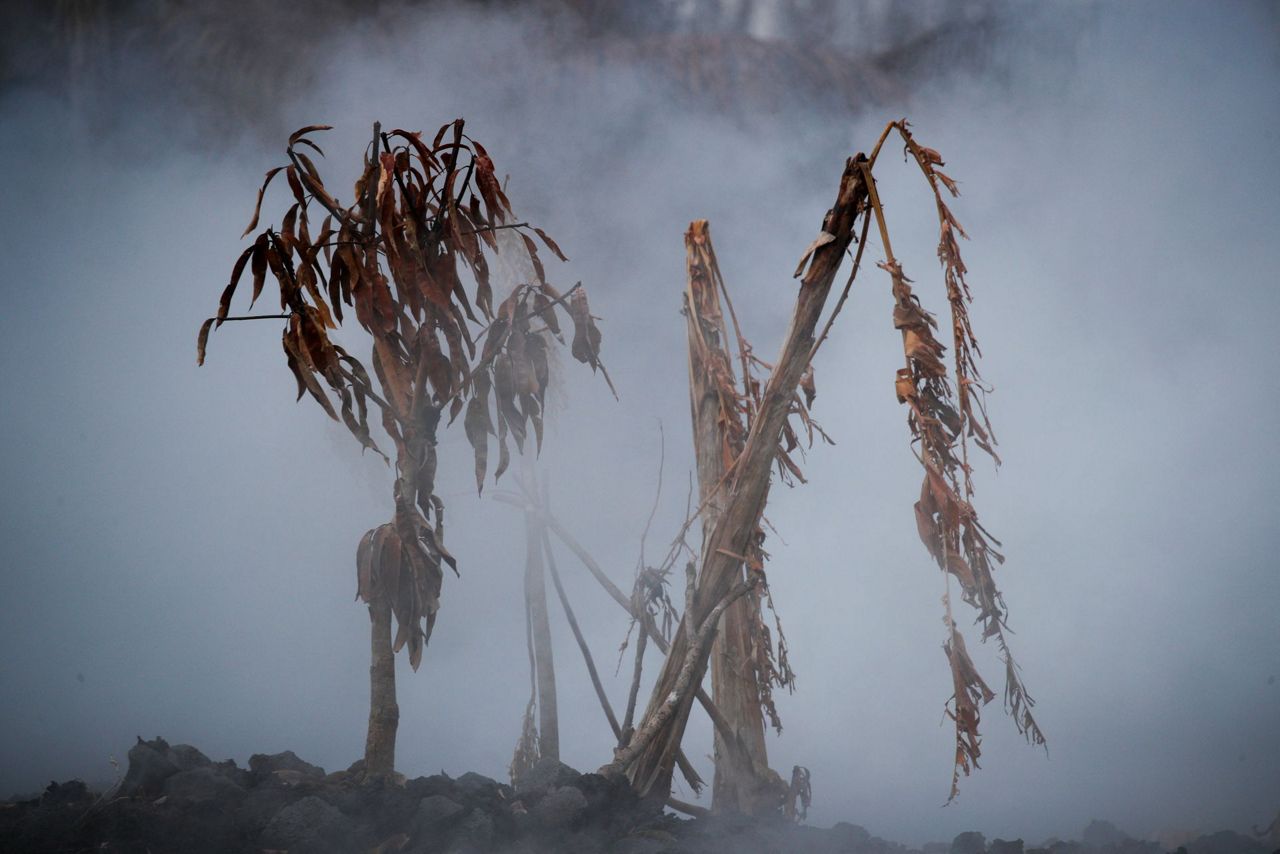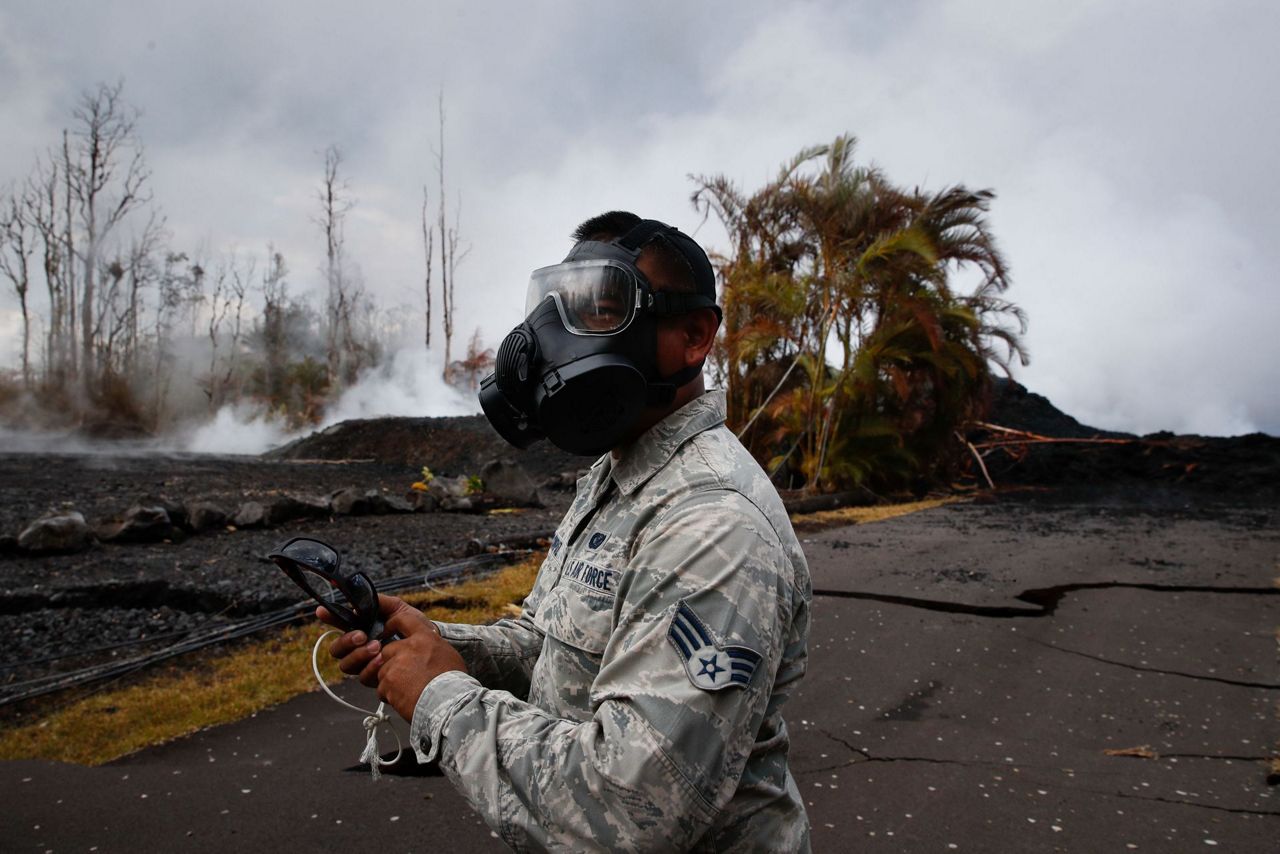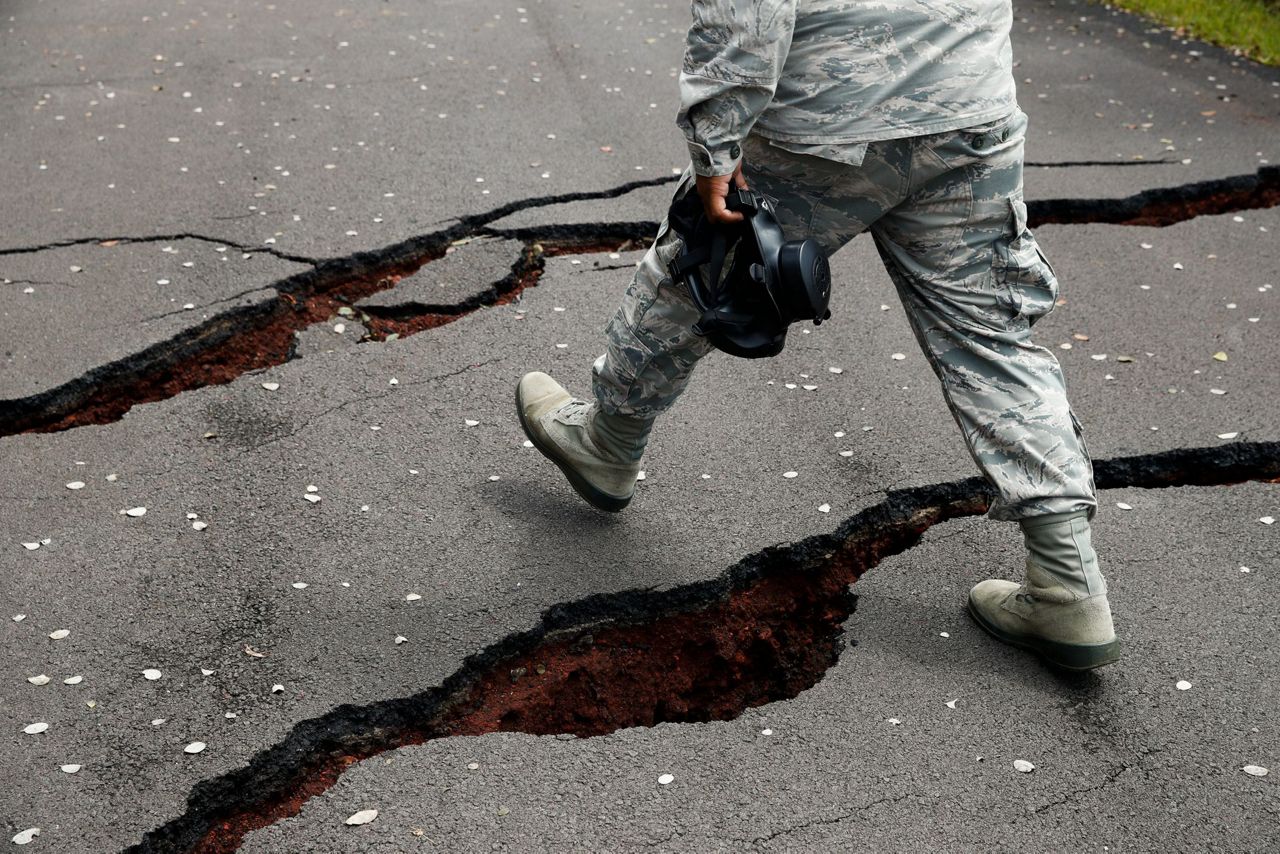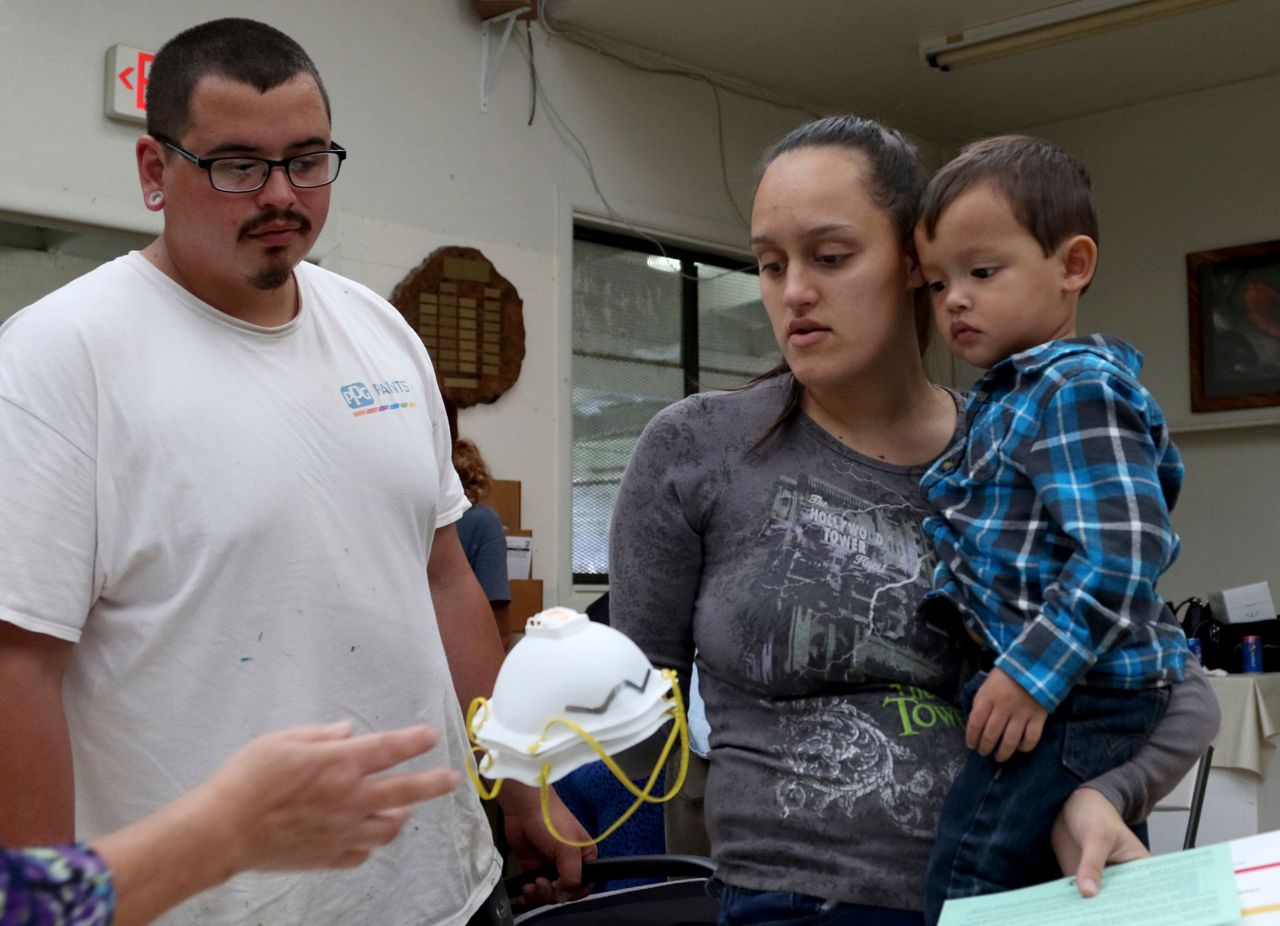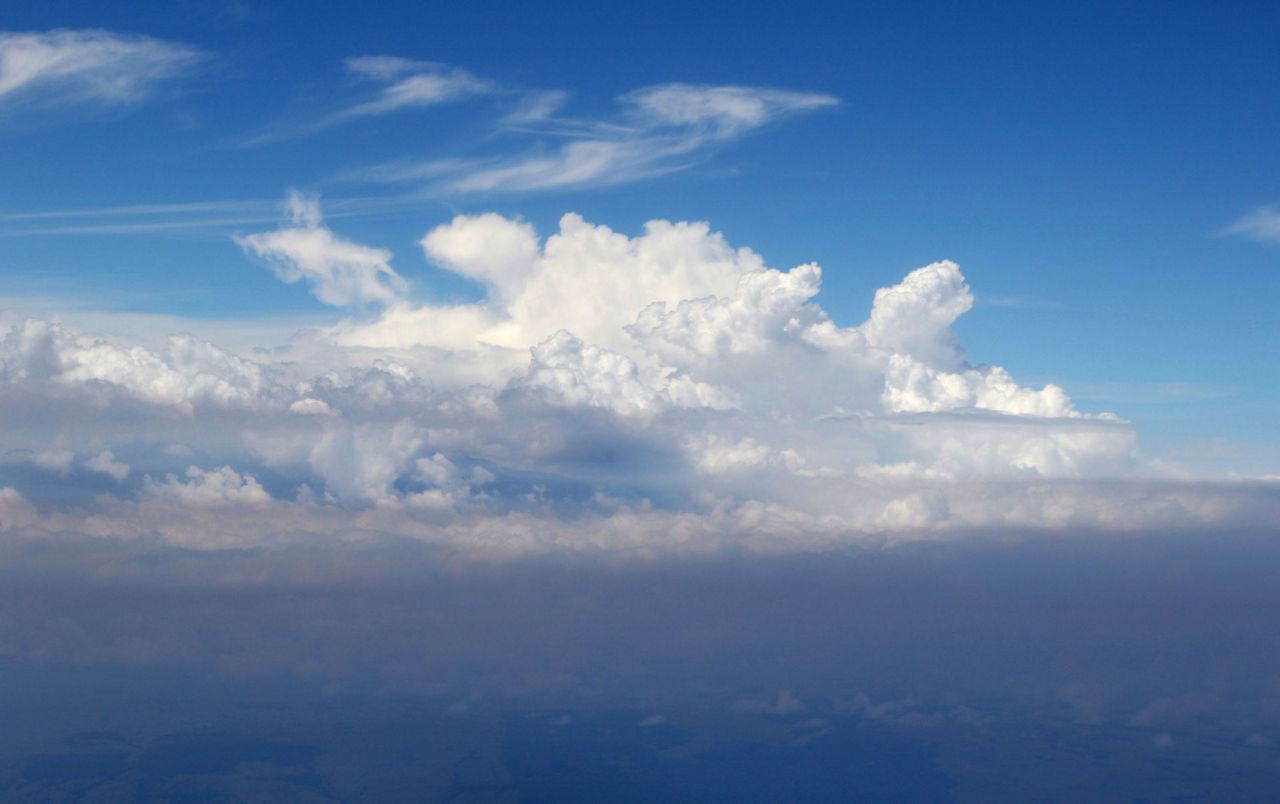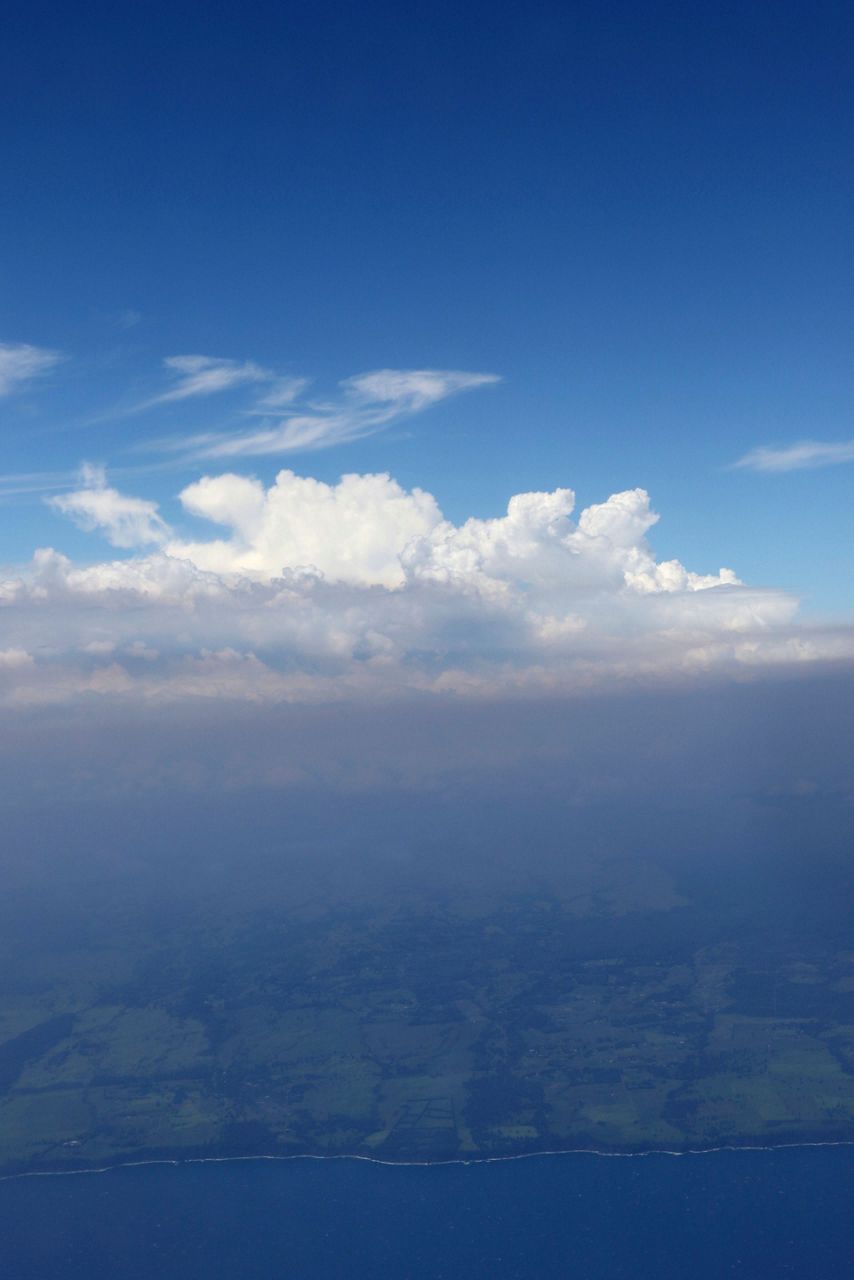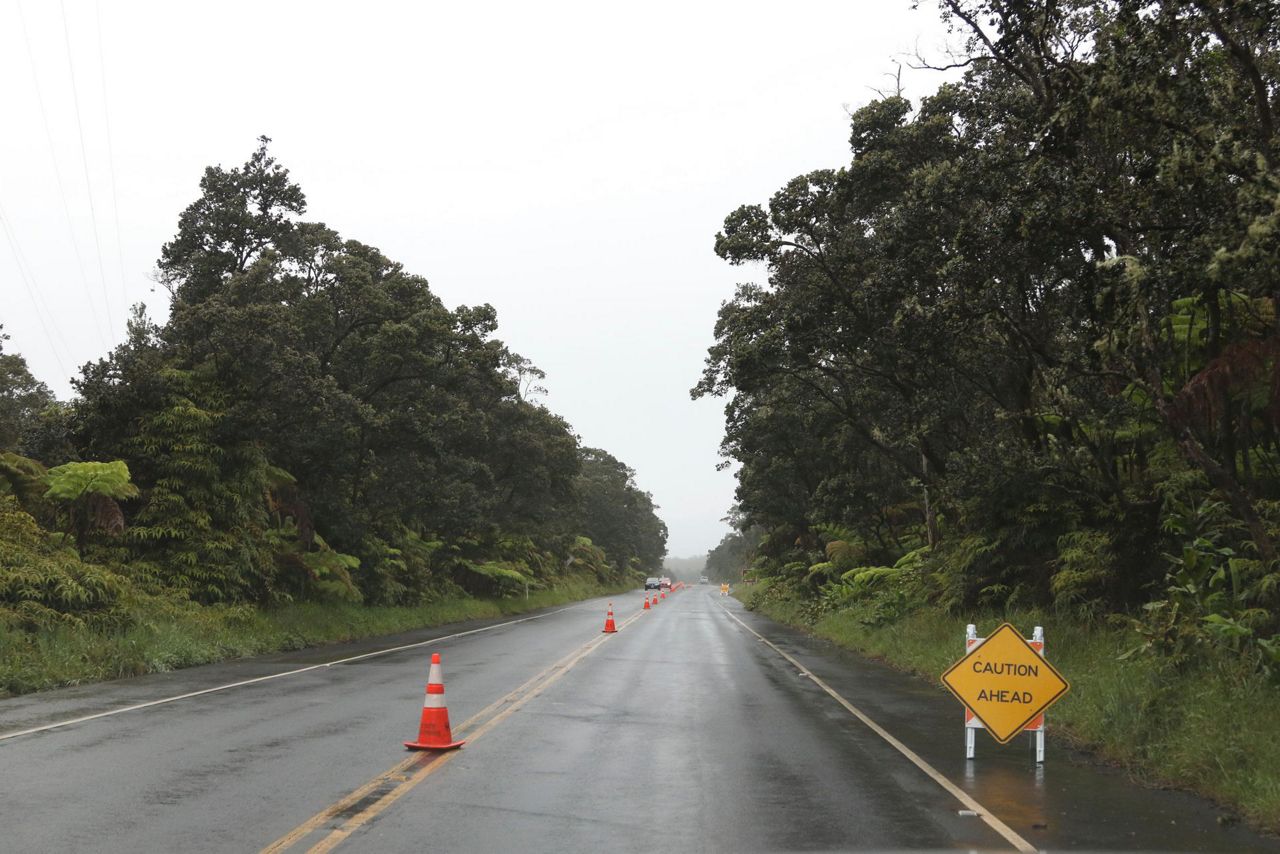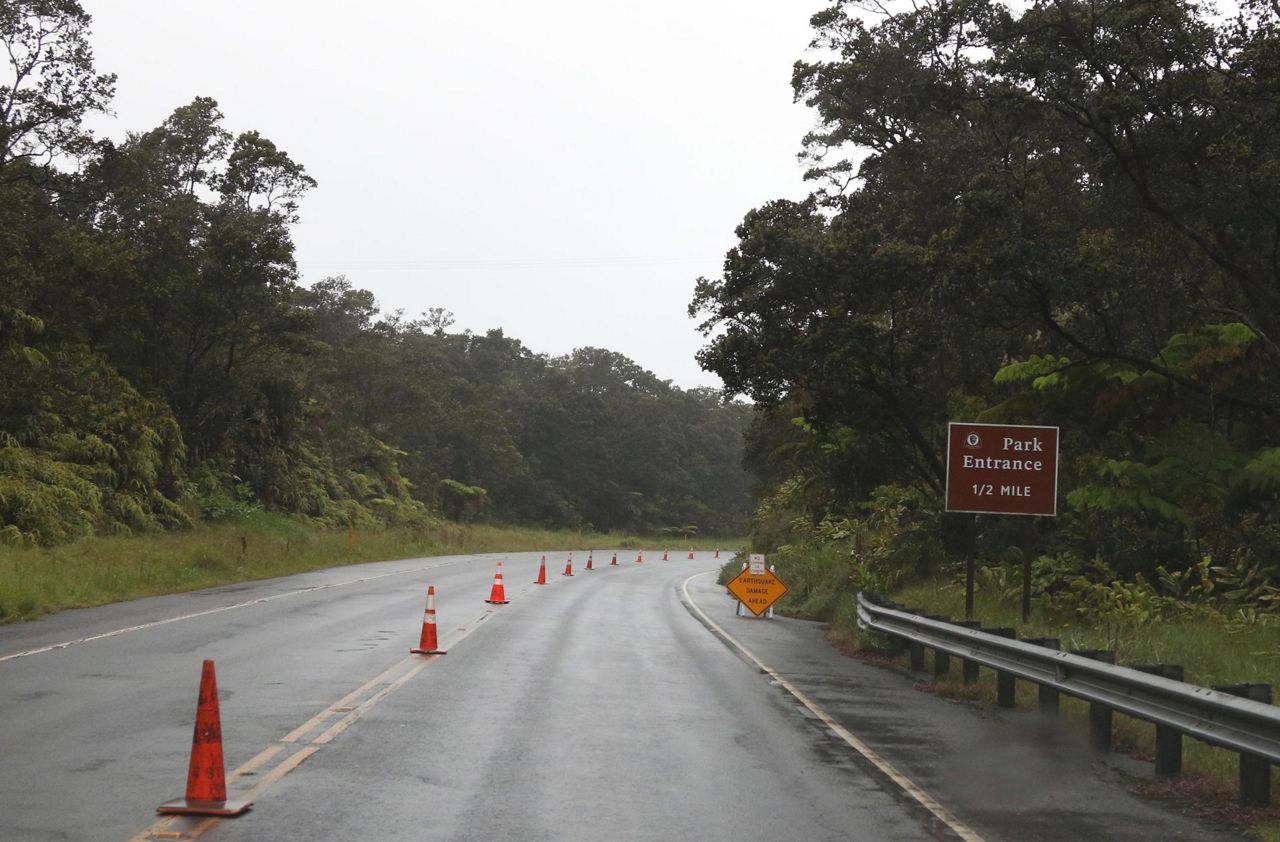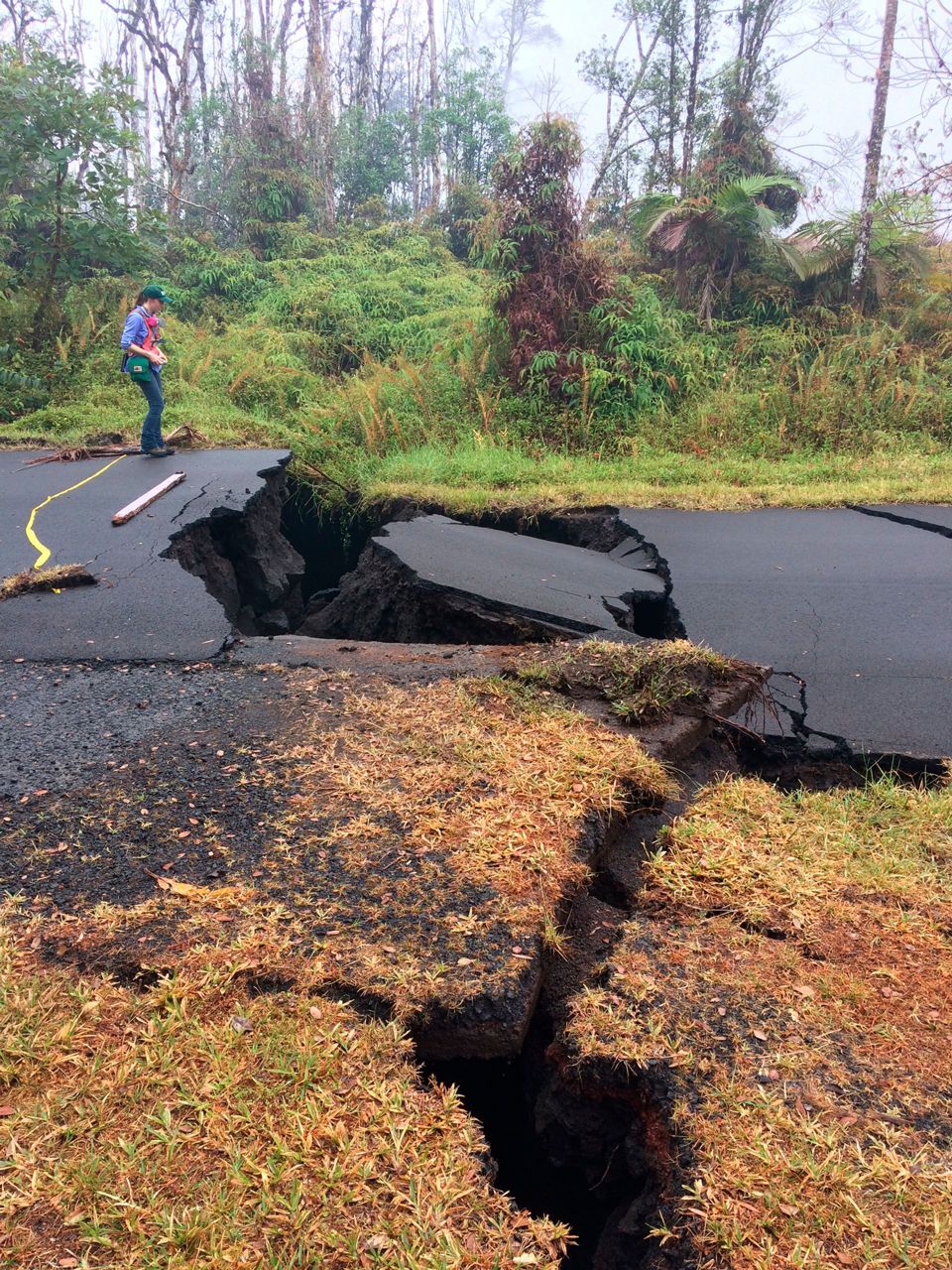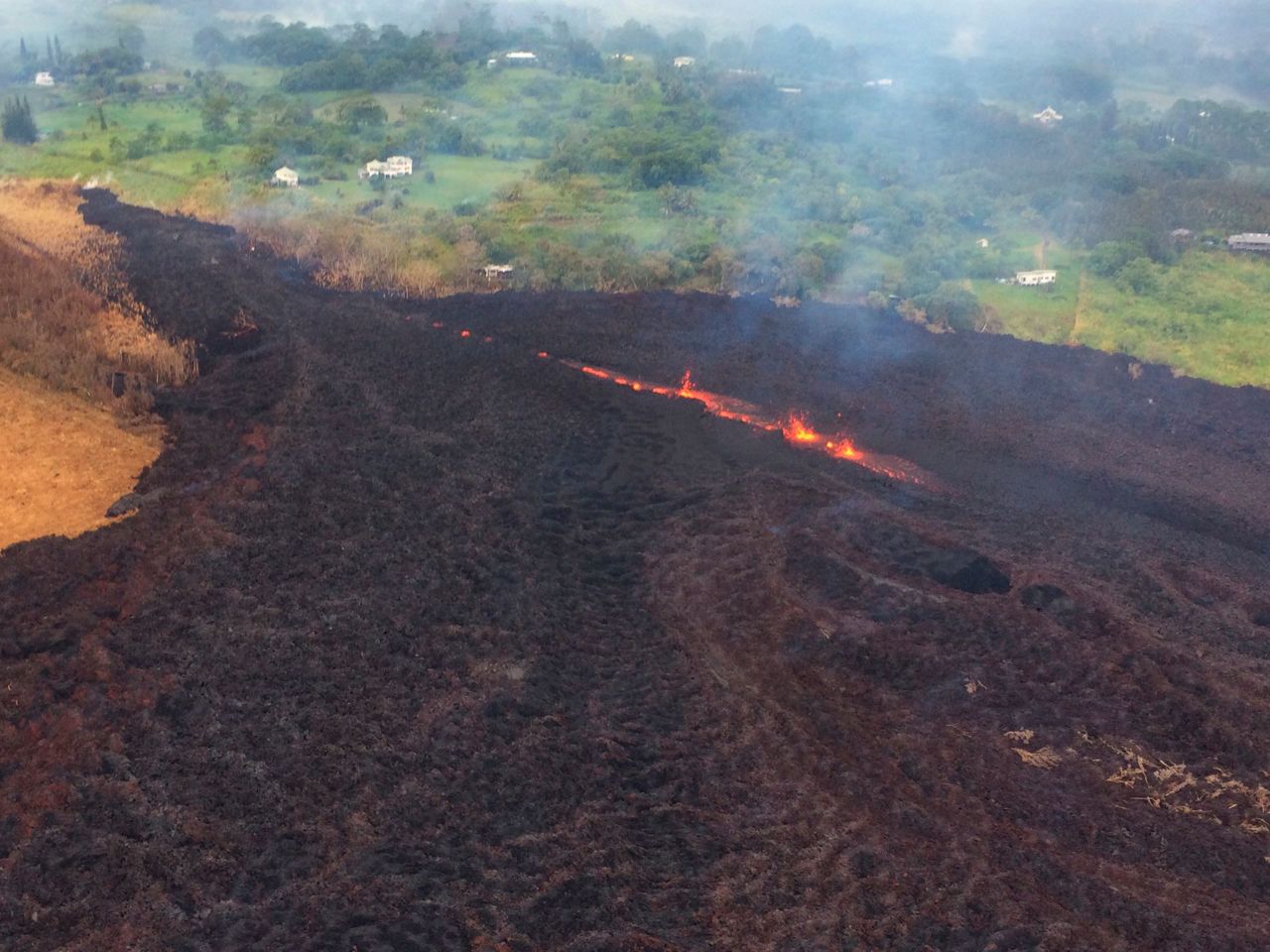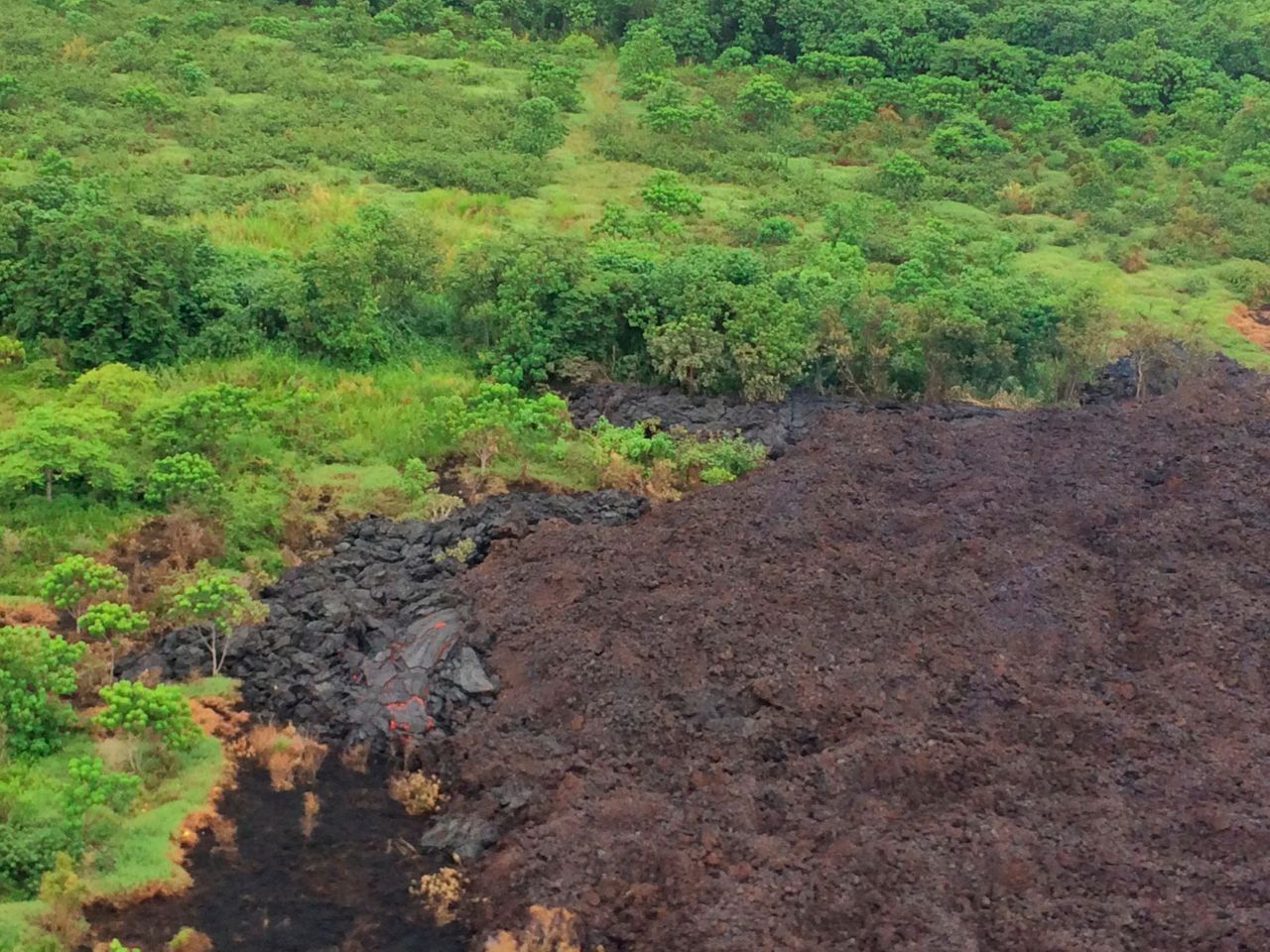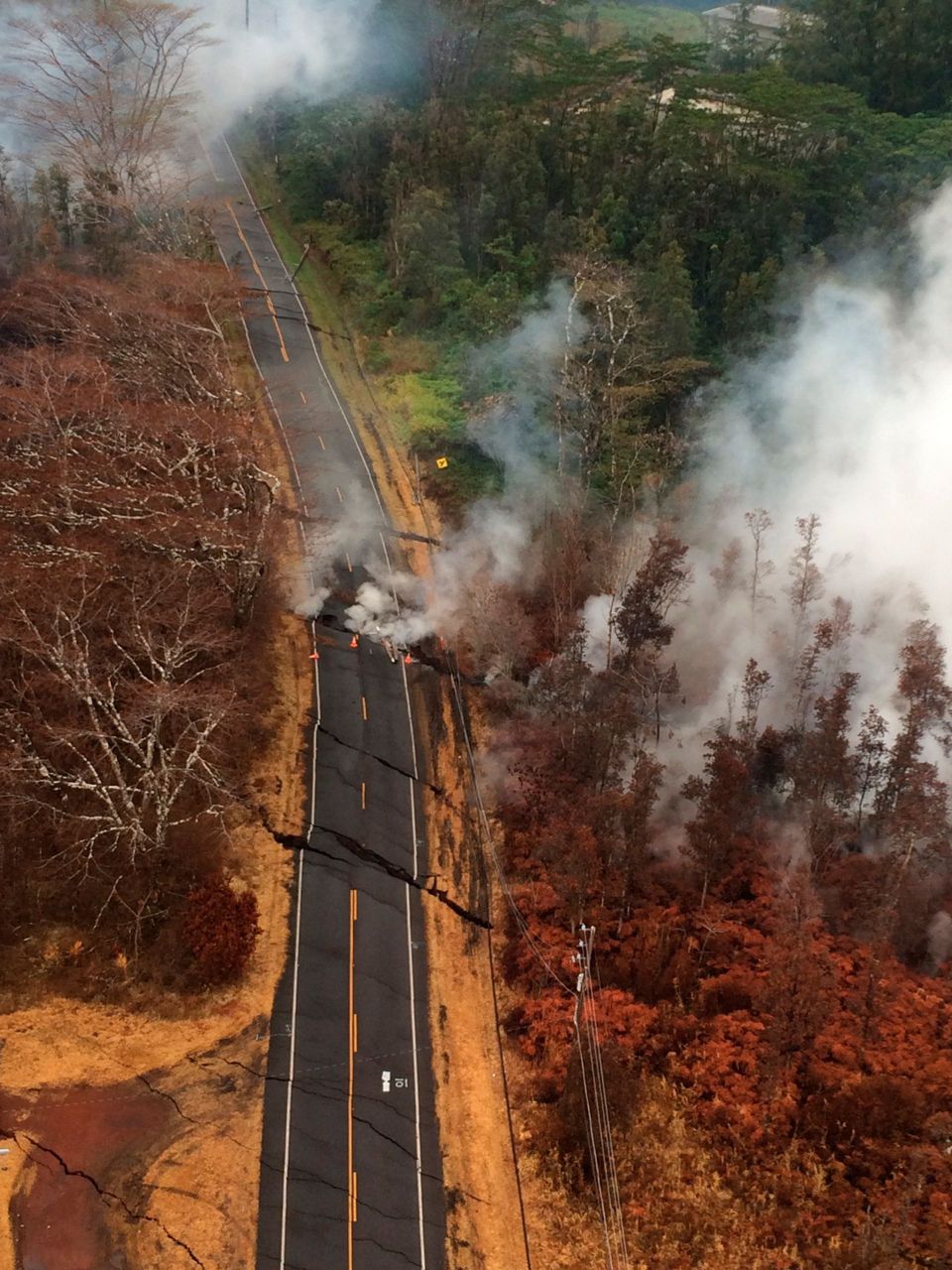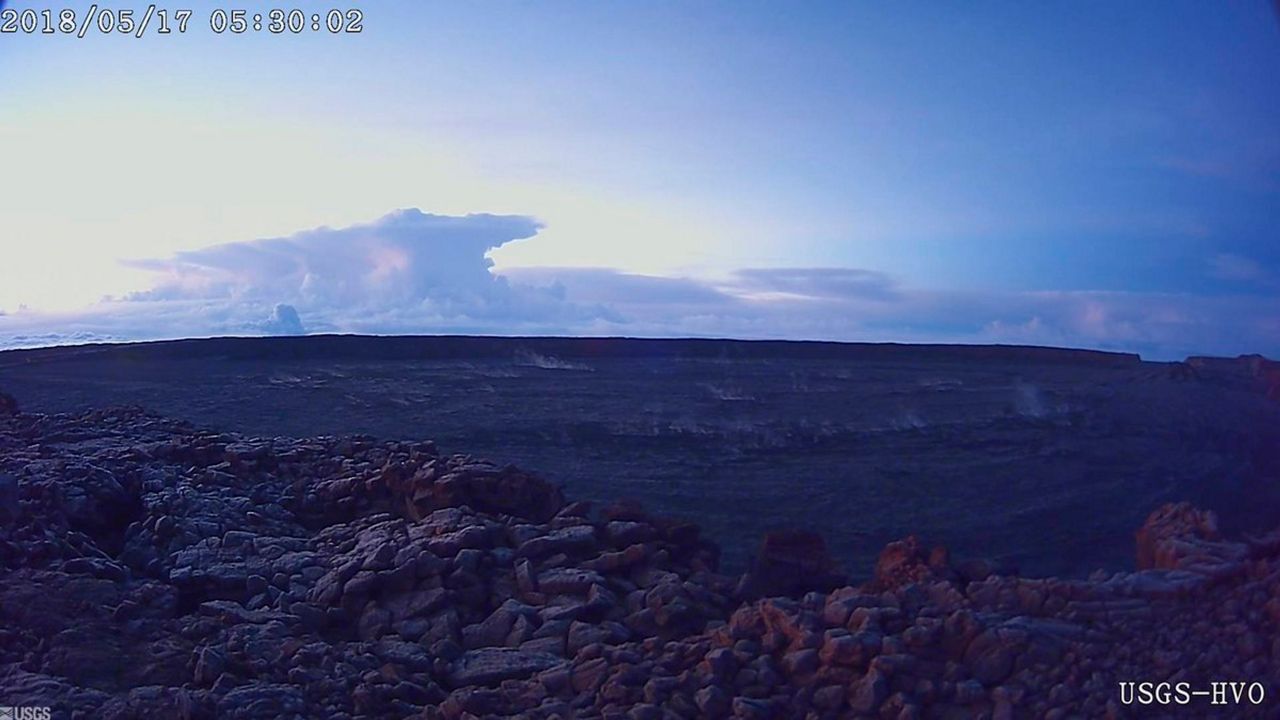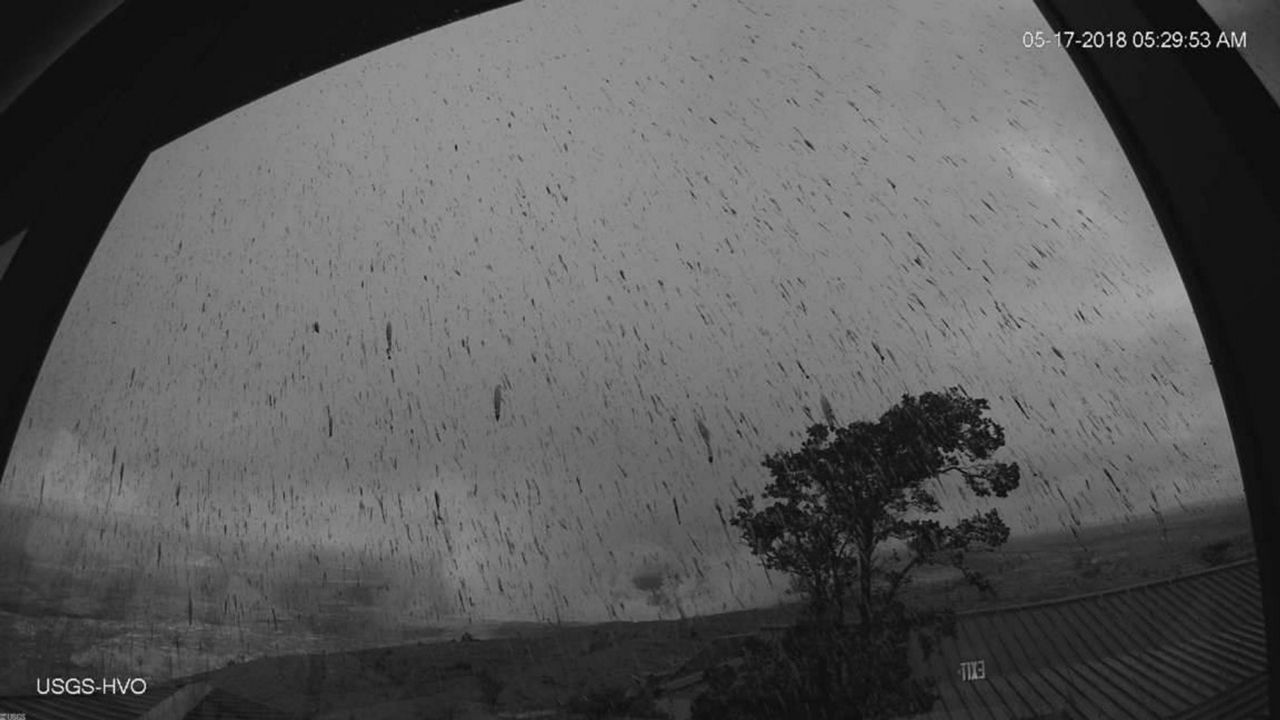VOLCANO, Hawaii (AP) — Experts remained flummoxed Friday about when Hawaii's Kilauea volcano will calm down.
The volcano exploded at its summit Thursday, sending ash and rocks thousands of feet into the sky.
Scientists said the eruption was the most powerful in recent days, though it probably lasted only a few minutes.
It came two weeks after the volcano began sending lava flows into neighborhoods 25 miles (40 kilometers) to the east of the summit, destroying 26 homes.
A new lava vent — the 22nd such fissure — was reported Friday by county civil defense officials.
Several open fissure vents are still producing lava splatter and flow in evacuated areas. Gas is also pouring from the vents, cloaking homes and trees in smoke.
The fresher, hotter magma will allow faster lava flows that can potentially cover more area, said Janet Babb, a geologist with the Hawaiian Volcano Observatory.
Much of the lava that has emerged so far may have been underground for decades, perhaps since a 1955 eruption.
Meanwhile, more explosive eruptions from the summit are anticipated.
"We have no way of knowing whether this is really the beginning or toward the end of this eruption," said Tom Shea, a volcanologist at the University of Hawaii. "We're kind of all right now in this world of uncertainty."
It's nearly impossible to determine when a volcano will stop erupting, "because the processes driving that fall below the surface and we can't see them." said volcanologist Janine Krippner of Concord University in West Virginia.
U.S. government scientists, however, are trying to pin down those signals "so we have a little better warning," said Wendy Stovall, a volcanologist with the observatory.
Thus far, Krippner noted, authorities have been able to forecast volcanic activity early enough to usher people to safety.
"If nobody warned people, and tourists were all over the place, that would have been devastating with those large rocks flying out — those are deadly," she said.
The Federal Aviation Administration still has flight restrictions in place, but for a smaller area — up to 5,000 feet above sea level, and a 3-mile (5-kilometer) radius around the crater.
The greatest ongoing hazard stems from the lava flows and the hot, toxic gases spewing from open fissure vents close to homes and critical infrastructure, said Charles Mandeville of the U.S. Geological Survey's volcano hazards program.
Authorities have been measuring gases, including sulfur dioxide, rising in little puffs from open vents.
For now, the ash seems to be more of a nuisance, rather than a severe threat. Hawaii residents are covering their faces to keep from breathing small particles flying through the air, and some have found thin coatings of ash as winds blew the plume away from populated areas.
Lindsey Magnani said Thursday that she and her family picked up some of the 2,000 masks distributed by county officials. She also closed all the windows at home to block air, which smelled heavily of sulfur.
Dr. Josh Green, a state senator who represents part of the Big Island, said the immediate health risk comes from ash particles in the air. Anyone with respiratory difficulties, such as asthma or emphysema, should limit exposure to the ash, he said.
"As far as me, I'm not sure whether it would do me any good to stay," said James Clapper, 70, an evacuated resident now sleeping in his truck. "The property out there has got huge, huge cracks. Is one of those cracks underneath the house? I don't know."
___
Associated Press journalists Jae Hong in Pahoa, Jennifer Kelleher and Audrey McAvoy in Honolulu, Becky Bohrer in Juneau, Alaska, Seth Borenstein in Washington, D.C., and Alina Hartounian in Phoenix contributed to this report.
Copyright 2018 The Associated Press. All rights reserved. This material may not be published, broadcast, rewritten or redistributed.



